Leaf Feeders
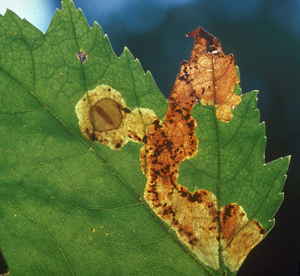
Lance S. Risley, William Paterson University, Bugwood.org

Lee Townsend, University of Kentucky
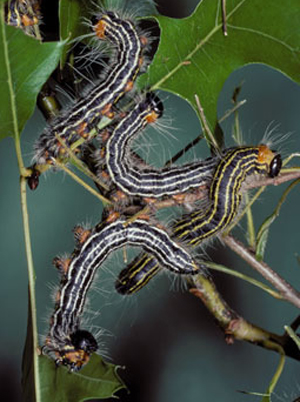
Gerald J. Lenhard, Louisiana State University, Bugwood.org
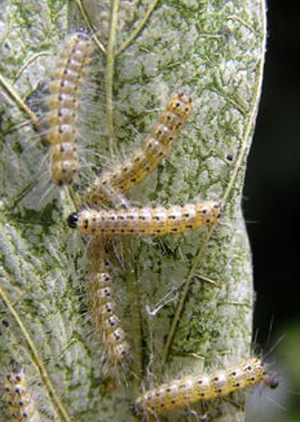
Milan Zubrik, Forest Research Institute - Slovakia, Bugwood.org
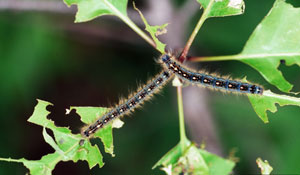
Steven Katovich, USDA Forest Service, Bugwood.org
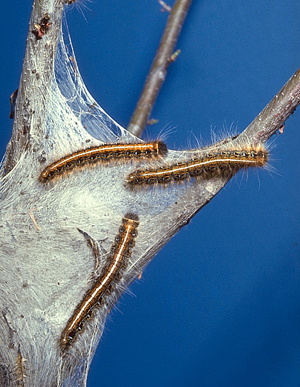
Robert F. Bassett, USDA Forest Service, Bugwood.org
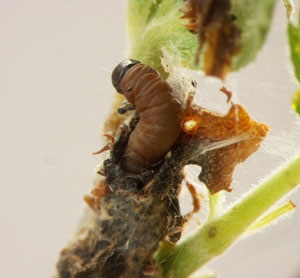
Copyright © 2018 John van der Linden, bugguide.net, used with permission
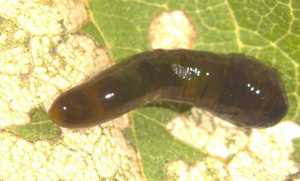
Lesley Ingram, Bugwood.org
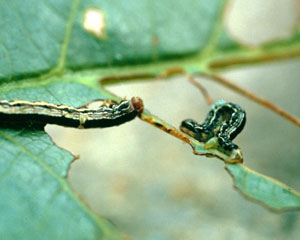
A. Steven Munson, USDA Forest Service, Bugwood.org
Sap Feeders

John A. Weidhass, Virginia Polytechnic Institute and State University, Bugwood.org
Also, aphid feeding on flower buds and fruit can cause malformed flowers or fruit. Aphids produce large amounts of a sugary liquid waste called "honeydew". The honeydew that drops from these insects can spot the windows and finish of cars parked under infested trees. A fungus called sooty mold can grow on honeydew deposits that accumulate on leaves and branches, turning them black. The appearance of sooty mold on plants may be the first time that an aphid infestation is noticed. The drops can attract other insects such as ants, flies, and wasps that will feed on the sticky deposits. For more information, see Entfact 103.
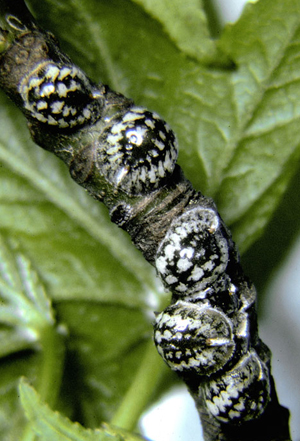
Raymond Gill, California Department of Food and Agriculture, Bugwood.org
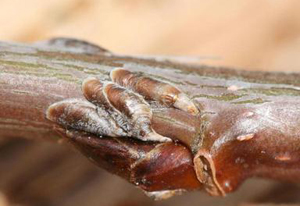
Whitney Cranshaw, Colorado State University, Bugwood.org
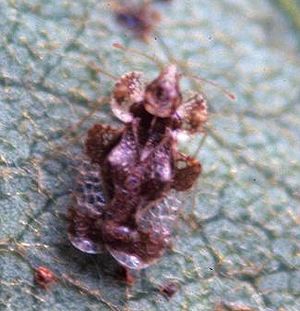
Jim Baker, North Carolina State University, Bugwood.org
These lace bugs spend the winter as eggs under bark or in leaf litter. The eggs hatch in early spring and the nymphs begin to feed on plant sap. There are several generations each season. Initially, numbers are so small that feeding symptoms are not noticed until the population peaks in late summer. When abundant, feeding can make plants unsightly and may cause premature leaf drop.
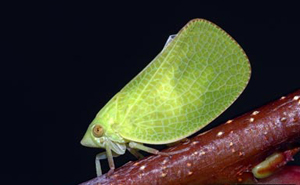
Susan Ellis, Bugwood.org
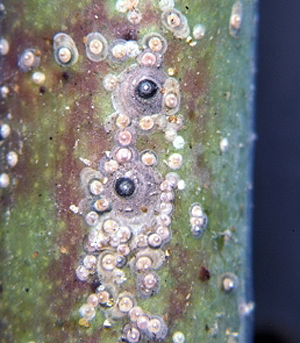
United States National Collection of Scale Insects Photographs,
USDA Agricultural Research Service, Bugwood.org
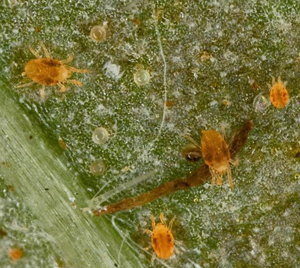
David Cappaert, Bugwood.org
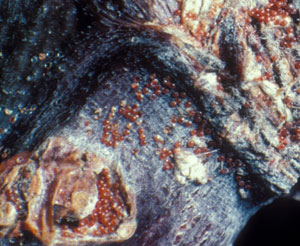
University of Georgia Plant Pathology, University of Georgia, Bugwood.org